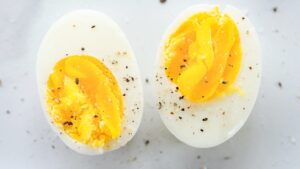In a recent work published on the bioRxiv* preprint server, scientists from the United States (US) looked at the features of the SARS-CoV-2 Omicron BA.2.75 sub-variants in terms of neutralization evasion and receptor affinity. Researchers examined the SARS-CoV-2 Omicron BA.2.75 sub-variants’ receptor affinity and neutralization evasion properties in the current investigation. First, they used surface plasmon resonance to determine the binding affinity of BA.2.75 sub-variations and other variants to the human angiotensin-converting enzyme 2 (hACE2) (SPR). In comparison to the D614G strain, they found that BA.4/5, BQ.1, XBB.1.5, BQ.1.1, and BF.7 had higher binding affinities.
DS.1, CH.1, and CH.1.1 were among the sub-variants of BA.2.75 that showed lesser affinity than BA.2.75. The binding affinity was improved by additional single changes in the BA.2.75 spike (R346T, K356T, L452R, R403K, or D574V).
The most compatible BA.2.75 sub-variant was BN.1. The researchers then looked at how well 30 monoclonal antibodies neutralized spike-pseudotyped viruses (mAbs).
Three mAbs focused on the N-terminal domain (NTD) or its sub-domains, and 27 mAbs targeted the receptor-binding domain (RBD) epitopes (SD1 and SD2). Class 4 RBD and non-RBD mAbs’ neutralizing effectiveness against BA.2.75 sub-variants was mainly unaffected.
BN.1 exhibited a fair amount of resistance to a couple class 3 RBD mAbs. Importantly, most class 3 mAbs including class 1 and class 2 RBD mAbs had trouble neutralizing CH.1.1, CH.1, DS.1, BM.4.1.1, and BA.2.75.2Besides, BM.4.1, BM.4.1.1, CH.1, BN.1, DS.1, and BL.1 sub-variants significantly impaired neutralizing activity. The authors observed a similar trend for sera from bivalent vaccine recipients and BA.2 and BA.4/5 breakthrough cohorts. CH.1, DS.1, and CH.1.1 displayed substantially stronger evasion, while BN.1, BA.2.75.2, BL.1, BM.4.1.1 exhibited moderately higher evasion than BA.2.75.
Next, the team used antigen cartography of neutralization results of bivalent vaccine-boosted sera to visualize the antigenic relationship of the sub-variants. BA.4/5 and BA.2.75 had a similar antigenic distance.
The point mutations D574V, F486S, L452R, K356T, and R346T in BA.2.75.1, BA.2.75.7, BA.2.75.4, BA.2.75.5, and BA.2.75.6 increased antigenic distance by 1.02, 1.47, 0.92, 1.14, and 0.3 antigen units (AUs), respectively, relative to BA.2.75.
BA.2.75.2 was 5.07 AUs from bivalent vaccine-boosted sera and 1.96 AU away from BA.4/5, suggesting an evasion advantage over BA.4/5. In addition, DS.1, CH.1.1, and CH.1 were 6.4, 6.75, and 6.09 AUs from the bivalent sera, respectively, similar to that for XBB.1.5 (6.39 AUs). The BA.2.75 sub-variants formed two antigenically distinct clusters; one set clustered with BQ sub-variants and the other with XBB sub-variants.





